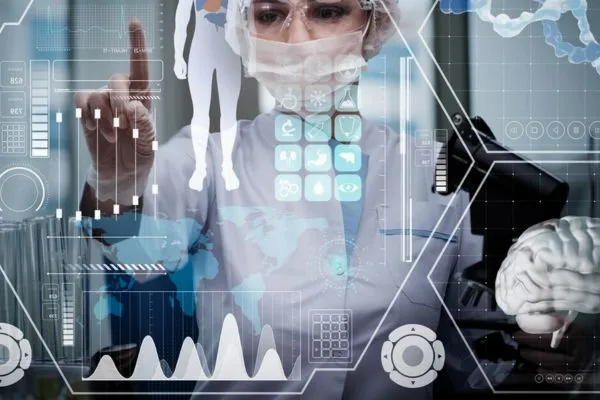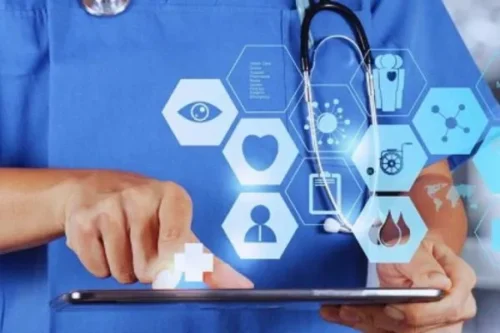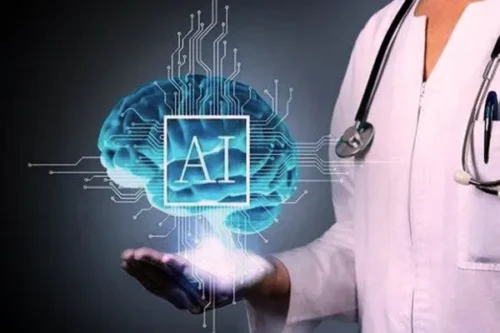
Tips for Attractively Design Your Instagram Account
May 14, 2024
How Technology Is Swamp The ERA?
June 10, 2024Technology has changed medical services, changing how we analyze, treat, and oversee ailments. From electronic well-being records to telemedicine, developments are further developing access, productivity, and results for patients around the world.
In the present advanced age, innovation’s effect on medical services is significant, reshaping the scene of patient consideration. From virtual interviews interfacing patients with specialists across distances to simulated intelligence-fueled diagnostics smoothing out clinical cycles, developments are engaging people, upgrading results, and preparing for a better tomorrow.
Experience the groundbreaking force of innovation in medical care, where headways are altering each part of patient prosperity. From wearable gadgets observing fundamental signs to accurate medication-fitting medicines, developments are further developing lives as well as forming a future where medical services are more open, effective, and customized.
Electronic Wellbeing Records
Electronic Prosperity Records can affect how clinical consideration providers regulate patient information. With EHR, specialists can get to complete clinical accounts, lab results, and treatment designs in a flash, smoothing out care conveyance. Patients also benefit, as EHR frameworks empower secure correspondence with their medical services group and helpful admittance to their well-being information.
Also, EHRs work with joint effort among various medical services suppliers, guaranteeing consistent coordination of care. By digitizing well-being records, EHRs upgrade effectiveness, exactness, and patient security, eventually working on the nature of medical care administrations while decreasing regulatory weights for the two patients and suppliers.
Telemedicine and Remote Patient Monitoring
Telemedicine and far-off Quiet Checking have arisen as huge advantages in present-day medical services. Technology permits patients to talk with medical services experts from a distance, killing the requirement for in-person visits. This is particularly gainful for people in far-off regions or those with portability issues. Also, Distant Patient Observing empowers constant following of crucial signs and side effects from the solace of home, working with early location of medical problems and proactive intercessions.
These advancements further develop admittance to medical services as well as improve patient accommodation and solace. By diminishing the requirement for successive clinic visits and empowering convenient intercessions, Telemedicine and Distant Patient Checking add to better well-being results and a more proficient medical services framework.
Medical Imaging Advancements
Clinical Imaging Headways allude to the continuous turns of events and developments in advancements used to picture inward body designs and works. These headways incorporate superior imaging modalities like X-ray, CT sweeps, and ultrasound, improving demonstrative precision and patient consideration.
Here are some more advancement of Medical Imaging Advancements
MRI (Magnetic Resonance Imaging) Innovations
X-ray (Attractive Reverberation Imaging) technology advancements ceaselessly refine imaging quality, making analysis more exact while limiting patient uneasiness. These headways improve clinical experts’ capacity to identify and treat different ailments with more prominent precision and proficiency.
CT (Computed Tomography) Scan Developments
CT (Computed Tomography) filter improvements are changing clinical diagnostics by giving point-by-point cross-sectional pictures of the body. With quicker filter times and further developed goals, CT innovation empowers more precise findings and better treatment anticipating patients.
Ultrasound Technology Advancements
Ultrasound innovation progressions are upgrading clinical imaging by offering more clear and more definite perspectives on interior organs and tissues. These improvements empower medical services experts to determine conditions to have more prominent accuracy and give more customized patient consideration, all while guaranteeing an agreeable and harmless experience for patients.
PET (Positron Emission Tomography) Scanning Breakthroughs
Leap forwards in PET (Positron Discharge Tomography) filtering are reforming disease recognition and treatment observation. These progressions take into account more exact restriction of cancers and evaluation of therapy adequacy, eventually working on understanding results and personal satisfaction.
Man-made consciousness in Medical care
- Man-made awareness (PC-based knowledge) in clinical consideration enables speedier and more accurate assurance predominantly of clinical data.
- Computer-based intelligence-fueled calculations help medical services suppliers in customized therapy arranging, improving patient consideration results.
- Virtual well-being colleagues controlled by artificial intelligence give customized well-being proposals and updates, advancing the proactive well-being of the executives.
- Man-made intelligence-driven prescient investigation assists with recognizing patients in danger of fostering specific circumstances, empowering early mediation and counteraction systems.
- Through AI, computer-based intelligence constantly works on its abilities, preparing for more productive and exact medical services conveyance.
Wearable Health Technology
Wearable well-being technology has become progressively famous, offering people advantageous ways of checking their well-being continuously. These gadgets, going from smartwatches to wellness trackers, can follow different measurements like pulse, action levels, and rest designs. With consistent combinations in day-to-day existence, they enable clients to assume command over their prosperity by giving moment criticism and inspiration to better propensities.
Additionally, wearable wellbeing innovation isn’t simply restricted to wellness following. High-level gadgets can likewise screen explicit medical issues like diabetes or hypertension, making clients and medical care experts aware of any irregularities. By advancing proactive well-being to the executives and early recognition of expected issues, wearable well-being innovation is altering the way that people draw in with their well-being and empowering more customized and preventive medical services draws near.
Robotics and Automation in Healthcare
Advanced technology mechanics and computerization are changing medical services by smoothing out processes and upgrading patient consideration. In clinics, robots help with undertakings like medicine conveyance, patient transportation, and disinfection, diminishing the responsibility on medical services staff and limiting the gamble of human blunder. Careful robots, furnished with accurate instruments and directed by gifted specialists, empower negligibly intrusive methods with more noteworthy precision and less recuperation time for patients.
Besides, robotization innovation enhances authoritative errands like arrangement booking and clinical charging, opening up medical services experts to zero in more on quiet consideration. With mechanical technology and computerization, medical services offices can further develop productivity, decrease costs, and at last give improved results to patients by conveying care that is both exact and ideal.
Impact of Mobile Health (mHealth) Applications
Versatile Wellbeing (mHealth) applications are upsetting medical services by putting fundamental apparatuses and data straightforwardly under the control of clients. These applications permit people to follow their well-being measurements, like activity, diet, and prescription adherence, advantageously on their cell phones or tablets. With highlights like side effect checkers and telemedicine interviews, mHealth applications give quick admittance to clinical counsel and backing, paying little mind to the area.
Besides, mHealth applications engage patients to play a functioning job in dealing with their ailments, offering customized bits of knowledge and updates for drug consumption or impending arrangements. By cultivating persistent commitment and correspondence among patients and medical services suppliers, these applications work with better well-being results and energize preventive consideration rehearses. By and large, the effect of versatile wellbeing applications reaches out past comfort, elevating a proactive way to deal with health and improving the patient experience.
Precision Medicine and Personalized Healthcare
Accuracy medication tailors clinical medicines to individual qualities, like hereditary qualities or way of life, to advance adequacy and limit secondary effects, guaranteeing customized medical care for every patient’s exceptional requirements. Here are a few examples:
Customizing Treatments: Precision Medicine’s Tailored Approach
Accuracy Medication tweaks medicines in light of individual elements like hereditary qualities and way of life, amplifying adequacy while limiting secondary effects for customized medical care.
Genetic Insights: Personalized Healthcare’s Individualized Strategies
Hereditary experiences guide customized medical services by distinguishing individual hereditary varieties and fitting therapies in like manner, guaranteeing designated mediations for improved results. This approach considers accuracy in clinical choices, upgrading treatments and preventive measures to suit every patient’s extraordinary hereditary cosmetics.
Optimizing Outcomes: Precision Medicine’s Targeted Interventions
Accuracy Medication’s designated mediations advance results by pinpointing the best medicines for every patient’s particular condition, further developing possibilities of effective recuperation. By zeroing in on individual qualities and reaction designs, Accuracy Medication limits experimentation draws near, prompting more productive and customized medical services conveyance.
Ethical and Privacy Considerations
In the domain of medical services technology, moral and security contemplations are foremost. As progressions in innovation consider the assortment and sharing of tremendous measures of individual well-being information, questions regarding patient assent, information security, and privacy become basic. Medical services suppliers and innovation designers should explore the sensitive harmony between using information for work on persistent consideration and guaranteeing patient protection privileges are regarded.
Besides, as man-made consciousness and AI calculations assume a more unmistakable part in medical services direction, moral issues emerge regarding calculation predisposition, straightforwardness, and responsibility. Tending to these worries requires progressing exchange, administrative structures, and industry principles to shield patient independence and confidence in medical services innovation. Lastly, moral and protection contemplations are fundamental to maintaining patient freedoms and keeping up with the respectability and reliability of medical services frameworks in the advanced age.
Data Analytics in Healthcare
Information examination in medical services includes the efficient examination of clinical information to reveal experiences that can work on persistent consideration and results. By mining enormous volumes of patient records, treatment accounts, and clinical results, medical services suppliers can distinguish examples and patterns that illuminate direction and streamline care conveyance. This information-driven approach empowers medical services experts to customize therapies, foresee illness flare-ups, and oversee assets all the more productively.
Besides, information examination assumes a fundamental part in the populace’s well-being of the board, considering designated mediations to work on general well-being and lessen medical services variations. Finally, using data assessment in clinical benefits draws in providers to go with extra-taught decisions, work on persistent experiences, and drive positive prosperity results.
Computer-generated Reality and Expanded Reality in Medical Care
Computer-generated Reality and Expanded Reality are changing clinical benefits by soaking patients and experts in natural virtual circumstances. VR technology empowers patients to go through remedial encounters or reenactments that ease torment, oversee uneasiness, and help in restoration. Moreover, AR overlays computerized data onto this present reality climate, upgrading clinical preparation, careful preparation, and intraoperative direction for medical services experts.
These vivid innovations likewise work with far-off interviews, permitting experts to team up on complex cases from various areas. By combining virtual and actual domains, VR and AR engage medical services suppliers to convey captivating, customized, and successful considerations while working on quiet results and propelling clinical instruction and preparation.
Health Information Exchange (HIE)
- Wellbeing Data Trade (HIE) empowers the secure division of patient data between medical services suppliers for composed care.
- HIE upgrades correspondence and coordinated efforts between various medical services substances, further developing proficiency and patient results.
- By working with admittance to far-reaching clinical records, HIE advances coherence of care and lessens copy testing and clinical mistakes.
- HIE assumes an essential part in crisis circumstances, giving convenient admittance to basic patient data for informed navigation.
- With HIE, patients can encounter smoother advances between medical services settings and get more customized and facilitated care.
Blockchain Technology in Healthcare
Blockchain innovation is changing medical services by giving a safe and straightforward method for putting away and sharing touchy patient information. By decentralizing data stockpiling and using cryptographic strategies, blockchain guarantees that clinical records are sealed and open just to approved parties, improving patient protection and information security. Besides, blockchain empowers consistent interoperability among various medical services frameworks, taking into account the effective trade of clinical data while keeping up with information honesty.
This innovation additionally works with the advancement of shrewd agreements, mechanizing regulatory cycles like protection cases, and clinical charging. With blockchain’s capability to smooth out information on the board and further develop trust and productivity in medical care exchanges, it holds a guarantee for upsetting the business and engaging patients with more prominent command over their well-being data.
FAQ’s
What is telemedicine and what might it do for patients?
Telemedicine engages far-off conversations among patients and clinical consideration providers, further creating permission for clinical benefits organizations, especially for those in the country or underserved areas.
How do Electronic Wellbeing Records (EHR) work on quiet consideration?
EHRs smooth out clinical data stockpiling and sharing, upgrading correspondence among medical services suppliers, and guaranteeing thorough and facilitated care for patients.
What are the upsides of involving man-made reasoning in medical services?
Man-made brainpower helps with determination, treatment arranging, and prescient investigation, prompting more precise analyses, customized treatment choices, and working on persistent results.
How do clinical imaging progressions add to better medical care?
Clinical imaging developments, similar to X-ray and CT filters, give nitty gritty pictures to analysis and treatment arranging, prompting the early discovery of infections and more exact mediations.
What are the moral worries encompassing innovation in medical care?
Moral contemplations incorporate patient protection, information security, and guaranteeing reasonableness and straightforwardness in the utilization of calculations and computer-based intelligence-driven dynamic cycles.
Conclusion
All in all, the effect of innovation on medical services is evident, reforming how we access, convey, and experience clinical benefits. From the digitization of well-being records to the approach of telemedicine and computer-based intelligence-driven diagnostics, innovation has unfathomably further developed proficiency, precision, and patient results. Nonetheless, as we embrace these progressions, it’s critical to stay cautious about moral contemplations, for example, patient protection and calculation inclination.
Pushing ahead, and proceeding with coordinated efforts between medical care experts, technologists, policymakers, and patients will be fundamental to outfitting the maximum capacity of innovation while guaranteeing impartial access and keeping up with patient trust. With continuous advancement and smart execution, the eventual fate of medical services vows to be more open, customized, and powerful than at any time in recent memory.






